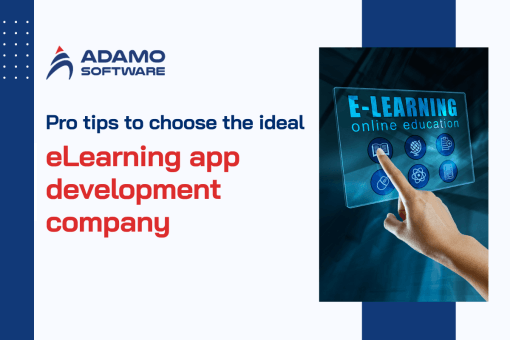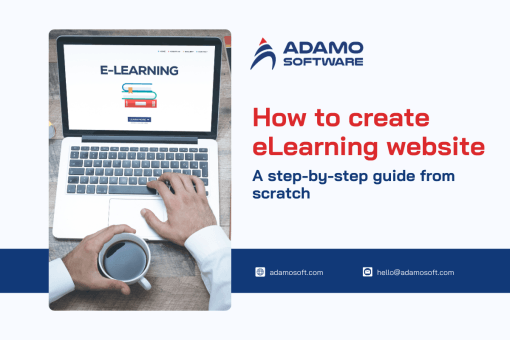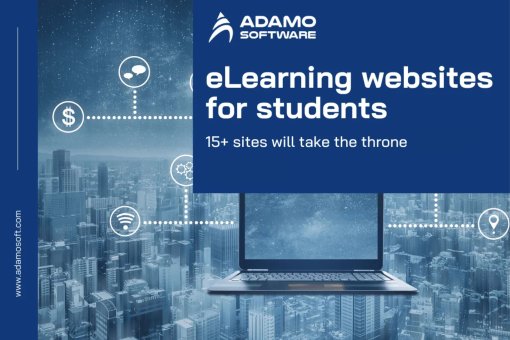How to Create an Educational App – Complete Guide 2026
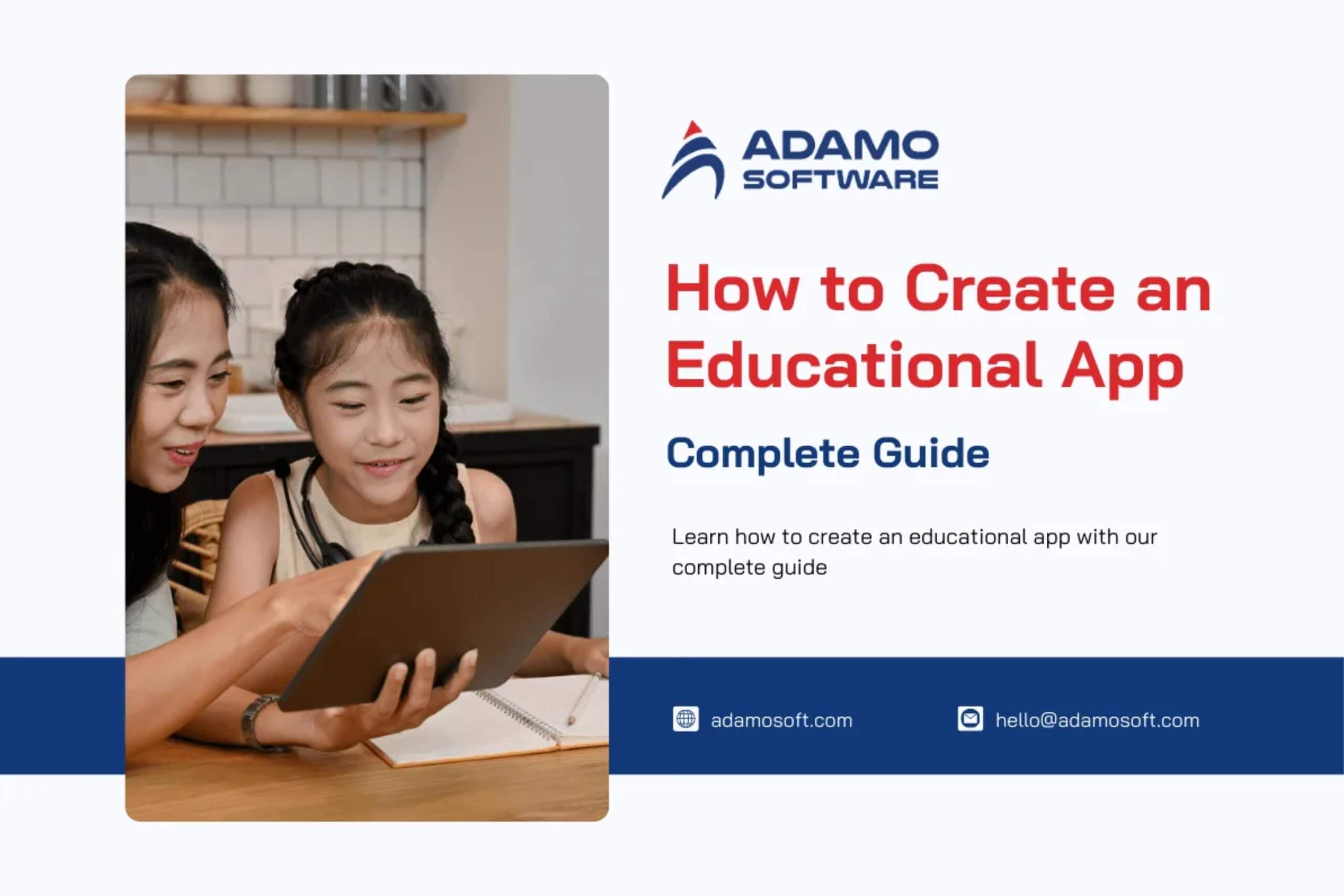
Today, educational apps have revolutionized the way we teach and learn. They have become an important tool in providing accessible, engaging, and effective teaching and learning experiences.
Educational apps serve a diverse audience, from kids learning literacy to professionals taking online courses. This digital education peaked during the pandemic, when we were affected by social isolation, curfews, and the inability to attend school. As the need for online learning increases, developing educational apps is a great way to contribute to the digital learning space.
In this comprehensive guide for 2026, we’ll guide you through the entire process of developing an educational app. Whether you are an educator looking to expand your teaching methods, or an entrepreneur looking to tap into the online learning market. We’ll provide you with detailed guidance to help you launch your app successfully.
I. Online Learning App Market Insight
You likely want to know the market size of e-learning and other related statistics before investing or creating a learning app. Let’s dive into online earning app market insight in this session:
The education app market continues to be vibrant and has many positive impacts on education development. However, education technology was already on a growth trajectory before the pandemic. The emergence and impact of COVID-19 has accelerated the shift to online education. It has caused a surge in investments in the education technology industry.
According to The Global Market Insights, e-learning was valued at an impressive $339.3 billion in 2022. It is also expected to have significant growth in the future.
Despite the decline in funding in recent years, there is a glimmer of hope. Venture capitalists are now more enthusiastic than ever to support online learning startups that can show immediate revenue potential. This shift indicates a promising future for startups entering the Edtech space. In 2022, US Edtech companies raised EdTech companies raised a total of $5.2 billion in investment capital for their educational applications. EdTech companies raised a total of $5.2 billion in investment capital for their educational applications.
Data analysis from sources like Pitchbook, Crunchbase, and internal resources revealed new information. In the first six months of 2023, private Edtech companies in the United States secured approximately $2.2 billion in funding. Overall, funding in 2023 has returned to the levels of 2019 and 2020nths of 2023, private Edtech companies in the United States secured approximately $2.2 billion in funding. Overall, funding in 2023 has returned to the levels of 2019 and 2020.dtech companies in the United States secured approximately $2.2 billion in funding. Overall, funding in 2023 has returned to the levels of 2019 and 2020.
Some key facts to consider when planning to build an educational app include:
- From 2023 to 2030, the US e-learning market is expected to generate the highest revenue, totaling approximately $74.8 billion.
- By 2023, the US e-learning market will lead with an estimated $74.8 billion in revenue.
- 63% of students in the US choose e-learning due to its adaptability.
- E-learning has seen a 900% growth since 2000, becoming the fastest-growing sector in education.
- Since 2020, the use of educational apps in K-12 schools has increased significantly, by about 99%.
- The K-12 gamified learning market is anticipated to grow at an annual rate of 20% until 2025.
- ByJu, the world’s largest Edtech unicorn, is valued at $22 billion.
II. Benefits of an Educational App
Creating customized educational apps to meet the needs of users as education becomes more and more popular. Here are the benefits of learning apps:
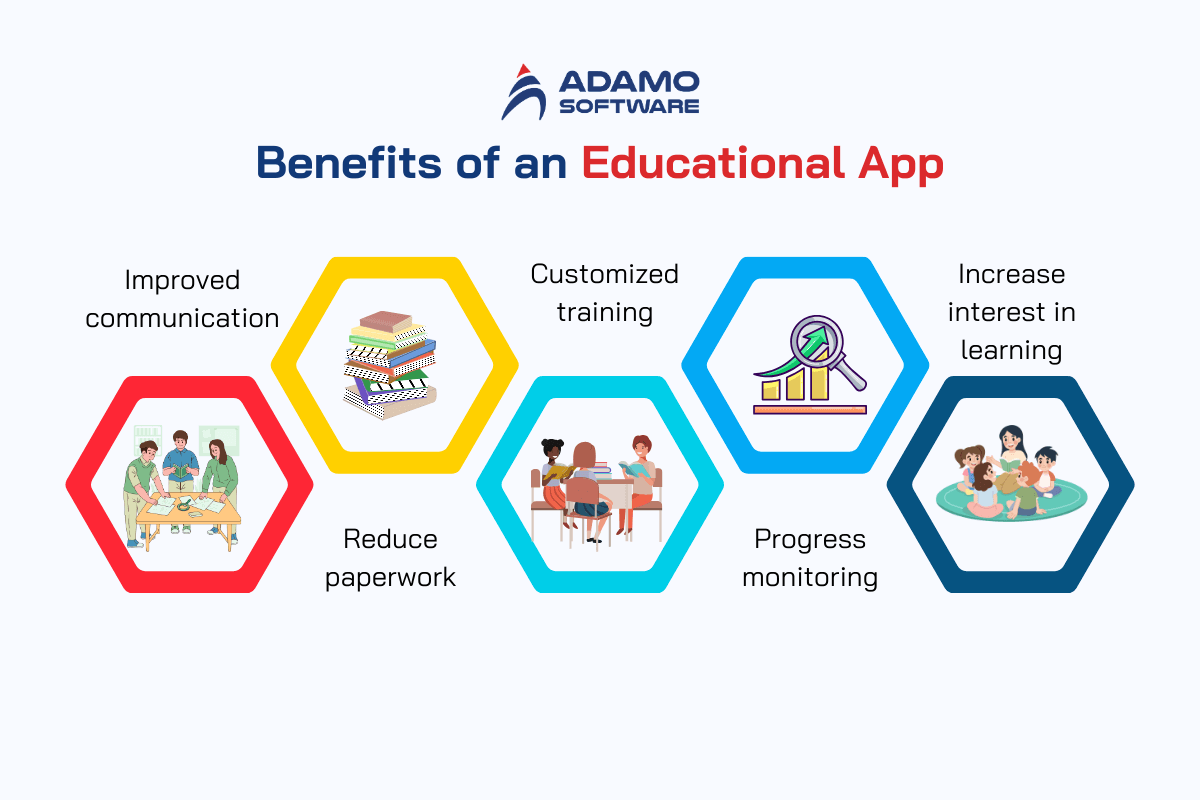
– Improved communication: Educational gaming applications promote open communication between parents, teachers, and students. Since teachers and parents often have busy schedules, discussing student progress often becomes difficult.
– Reduce paperwork: Educational apps have significantly reduced paper documents. Instead of printing textbooks or paper documents, students can quickly download various documents from the Internet. Thanks to digital resources, students can look up documents by quickly searching for words. This helps students save time and money while improving learning outcomes.
– Customized training: Teachers can create and administer tests to better understand each learner’s capabilities. This data, in turn, helps teachers customize learning plans that are tailored to the student’s capabilities, knowledge, interests, and performance.
– Progress monitoring: Educational apps help students track their learning progress. This helps in boosting the learning progress of students based on the appropriate feedback from teachers on their individual performance. Teachers can also provide students with real-time feedback on their behavior and progress, encouraging them to improve their academic performance.
– Increase interest in learning: Using learning apps turns educational solutions into a smart and fun way to get kids interested in learning. This contributes to improving their learning process. Learning apps will help increase the level of engagement by integrating games, and quizzes.
III. How to Make an Educational App – 10 Steps
We’ve provided 10 steps to help you create an app. This step-by-step guide will show you what to focus on while developing educational apps. Let’s check it out one by one.
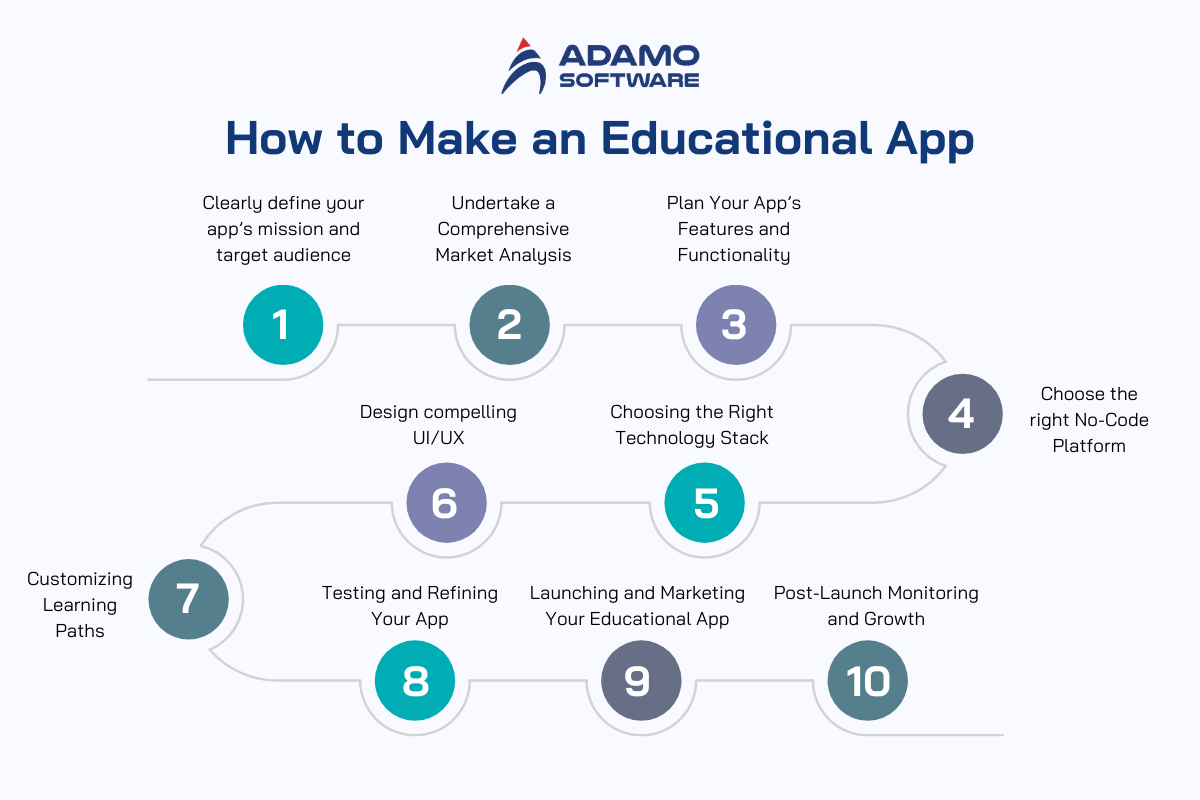
Step 1: Clearly Define Your App’s Mission and Target Audience
Before starting the process of how to create an educational app, you should define your mission and audience. It is essential to know all about the goals your app hopes to achieve and the audience that will use it before starting the process of building an educational app. Consider the following questions as you do so:
- What is the purpose of your application? Is the focus on educating users on specific topics and assisting users in acquiring new skills, or providing a platform for users to learn together with others?
- What exactly is the majority of your app’s target audience? Do you focus on preschool-aged children, children in grades K-12, students in college, or working adults?
- What specific requirements and tendencies does your ideal audience have?
Creating a clear direction about your app’s purpose and key user information will serve as your navigational compass throughout the app development process.
Step 2: Undertake a Comprehensive Market Analysis
It is important to conduct extensive and comparative market research if one wants to understand the competitive audience of the online education app market and identify potential business prospects. Research the educational apps that are already available on the market and carefully observe their features, pricing models, the reviews they receive from users, and their overall track record.
Choose the type of educational app you need, how your users will react to this, and analyze your competitors.
This in-depth analysis will allow you to recognize gaps in the market and modify your app to meet the specific requirements of the audience you want to attract.
Step 3: Plan Your App’s Features and Functionality
To create an effective educational app, it’s important to determine the services you want to offer your users. Understanding the services you want to provide to your future users is essential to creating a remarkable e-tech application. There are also some other smart ways to identify features that will increase the appeal of your app. This is the way:
- Use user feedback: The review sections of the best educational mobile apps available in stores like the Google Play Store and Apple Play Store are a valuable mine of information. Here, users often express their ideas and wishes about the application’s features. You can learn a lot about user opinions by reading these reviews.
- Take advantage of user engagement: Think about conducting polls to get direct feedback from your potential users. This allows you to interact with your target market and learn about their feature options. Their suggestions can serve as a successful design for your application.
Step 4: Choose the right No-Code Platform
Once you’ve decided on the features and functionality of your app, it’s time to choose the best no-code app builder.
Many app builders are available in the market. Compare all available options and choose the best one that fits your requirements and budget perfectly. Twinr stands out the most for its ease of use, implementation system, and support. Twinr allows users to convert their existing website into an amazing, feature-rich mobile app that works.
So, decide wisely when choosing the right learning app development platform.
Step 5: Choosing the Right Technology Stack
The technology stack is equally important in creating an educational app. For example, if you build using a cross-platform approach, you must know which framework will perform best. Which framework do you want to use?
In case you plan to develop native apps, choose the operating system. When choosing iOS or Android, you have to choose a programming language, backend tools, IDE, and code editor to build your app.
The most popular technology stack for educational app development is the MEAN stack. Many businesses also use Google Cloud to help with growth and collaboration.
Step 6: Design compelling UI/UX
Next step, an experienced app development team, along with UI/UX designers, will turn your system into a visually appealing and user-friendly interface. While prioritizing usability and convenience, the design will also feature aesthetic elements.
The user experience will be tailored to the target audience’s age and cognitive abilities. For example, preschooler apps will use vibrant colors, images, and game content to enhance engagement and learning, with animations aiding knowledge retention.
The app development company will present a complete design layout. Detailing the app’s structure to ensure developers create the e-learning app as envisioned.
Step 7: Customizing Learning Paths
E-learning apps stand out in personalizing learning experiences. Imagine an app tailored to your learning style, pace, and preferences. Customizing learning paths allows students to choose their suitable methods. They can explore different topics, levels, and formats that suit their goals. This flexibility is crucial for visual learners using interactive modules and auditory learners enjoying podcasts.
It’s not just about offering choices. Customization also includes tracking progress and giving insights into achievements and growth. This encourages motivation and focuses on areas for improvement.
Customization extends beyond content. Gamification can reward milestones, fostering a sense of accomplishment and healthy competition. Badges and leaderboards can celebrate these achievements.
Language learning apps, for example, offer a rich experience by catering to diverse learning styles. Allowing students to tailor their learning journey fosters a sense of ownership and empowerment, both in and out of the digital realm.
Step 8: Testing and Refining Your App
The final stage of developing an educational app involves thorough testing and refining. Understanding how to create an educational app includes:
- Testing Expertise: This step includes both manual and automated testing. It ensures that your learning platform is optimized and ready to impress users from the start.
- Platform Rollout: After testing, it’s time to launch your app on the desired platforms, such as the Apple App Store or Google Play Store.
- Support: Post-launch, it’s essential to maintain an active presence. Continuously listen to user feedback, address bugs, and improve the app. This commitment to user experience helps build a lasting relationship with your audience.
Step 9: Launching and Marketing Your Educational App
Congratulations, you’re almost ready to go live! Making your educational app successful after launch is crucial. Here’s how to do it:
- App Store Debut: Publish your app on platforms like the Google Play Store and Apple App Store. This is where users can discover and download it.
- Get the Word Out: Use social media to promote your app. Share details about the launch and the app’s benefits to attract attention.
- Website Spotlight: Feature the app prominently on your website. This helps direct your existing audience to your new educational tool.
- Press On: Consider issuing a press release to generate media coverage. This can boost interest and attract more users to your app.
Step 10: Post-Launch Monitoring and Growth
After launching your app, it’s crucial to implement strategies for post-launch marketing and monitoring. Start by analyzing app store data to understand user behavior. Reach out to your target audience to encourage downloads and gather honest feedback.
Regularly update the app with new features and improvements, and actively market it on social media.
To maintain a smooth user experience, prioritize regular security updates and promptly address bugs. Consistent monitoring and adaptation will help your app grow and succeed.
IV. Top Successful Educational App
Before showing you how to make an educational app for Android and iOS, it’s a good idea to dive into a review of your competitors. If you want to build a custom mobile app for educational purposes, you must find out who your main competitors are.
Let’s analyze them a bit, shall we? I bet it will give us some basic insights into what kind of education solutions can help you grab a fair share of that $183.4 billion Edtech market.
Here’s a brief overview of the most successful educational app right now:
- Duolingo and Babbel are top choices for language learning apps.
- Duolingo Math and Photomath offer explanations to help users solve math problems.
- Toca titles are kid-friendly games that double as educational tools.
- Google Classroom connects teachers and students in a virtual classroom environment.
- Picture This and Plantin identify plants from photos and provide care instructions, including watering schedules.
- SkyView, Star Walk, and Starlight enhance learners’ knowledge of celestial objects in the night sky.
- Elevate offers a variety of mini-games designed to improve mental skills.
- Remind is a chat app that facilitates communication and material sharing among students.
- Chegg Study provides students with access to textbooks and expert answers.
- Blinkist and Headway summarize popular books into easily digestible summaries.
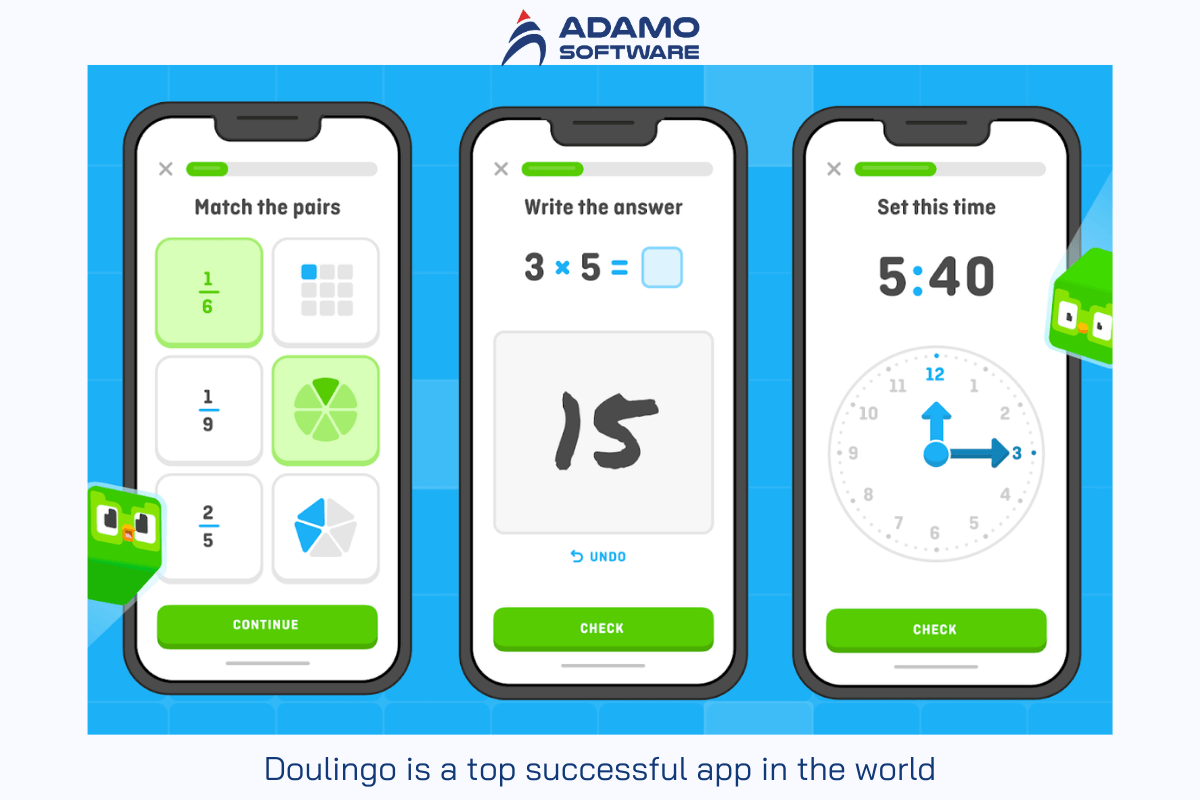
Also read: Best Tech Stack for Educational Learning Software
V. How to Monetize Your Educational App
Monetizing and marketing educational apps is a crucial part of understanding how to create an educational app. Here are some effective monetization strategies:
- Freemium Model: This approach provides a basic version of the app for free, with charges applied for access to additional premium features. It helps attract a larger user base and generates revenue through paid subscriptions.
- In-App Purchases: Users can buy additional content, features, or virtual goods within the app. This monetization strategy targets users willing to pay for extra options.
- Subscription Model: This model provides access to premium content or features for a recurring fee, ensuring a consistent revenue stream and fostering user loyalty.
VI. Build Your Educational App with Adamo Software
Adamo Software provides a full suite of mobile app development services tailored to the educational sector. If you’re exploring how to create an educational app, they guide you from initial concept design through to deployment. We ensure your app meets both educational standards and user expectations. Our team leverages educational expertise and the latest technology to create practical and engaging solutions for users.

Whether you’re looking to develop a simple educational tool or a comprehensive learning platform, Adamo’s development process offers flexibility and efficiency. We focus on delivering high-quality, cost-effective solutions. Our commitment to excellence and innovation ensures that your app will stand out in the competitive educational technology market.
Allow us to be the trusted partner in bringing your vision for an educational app to life!






